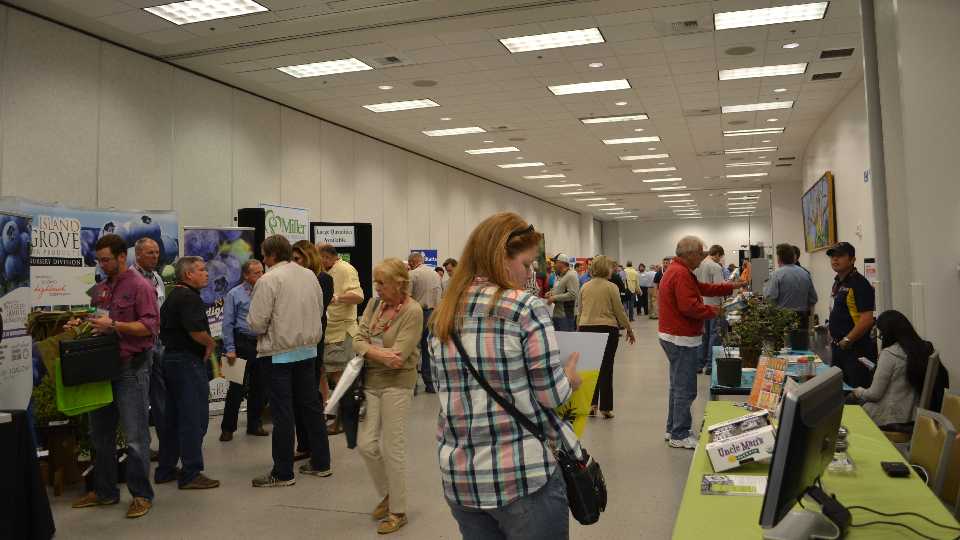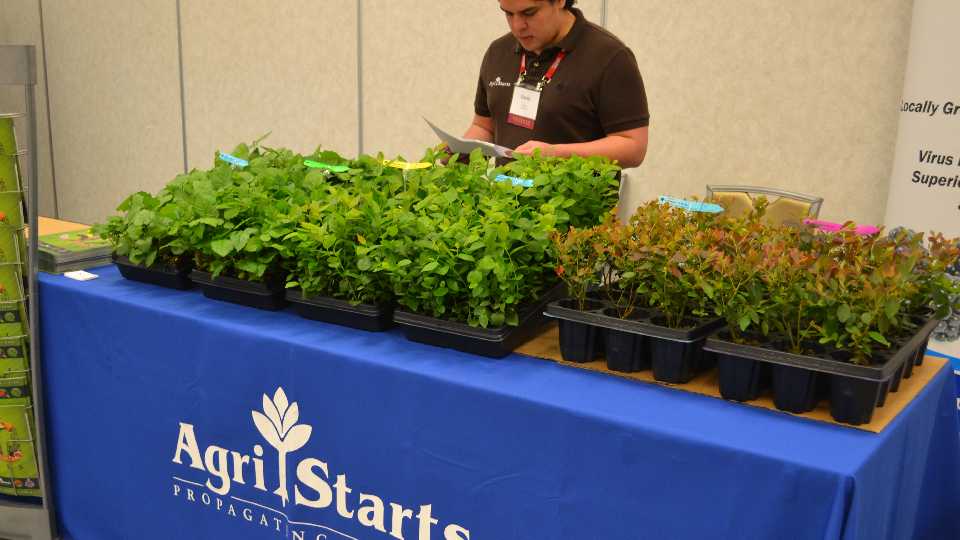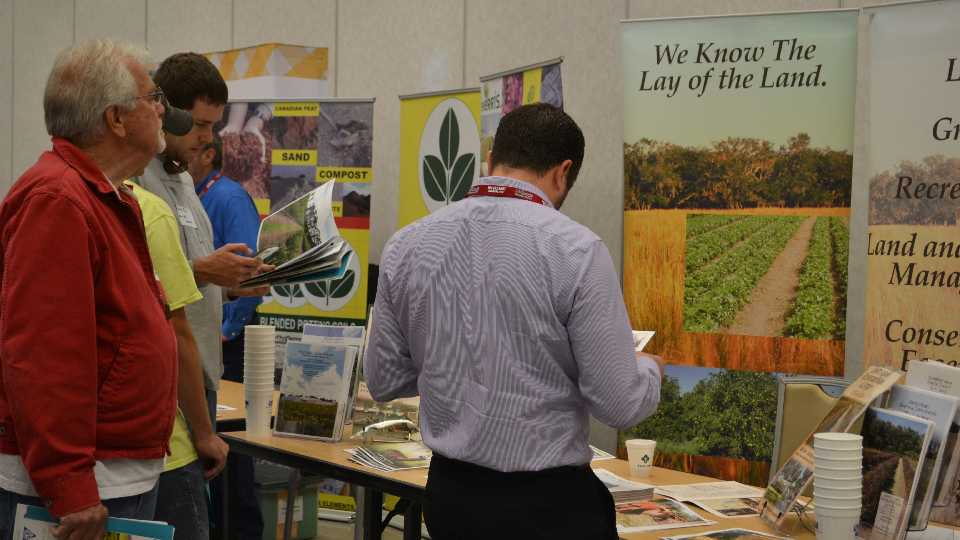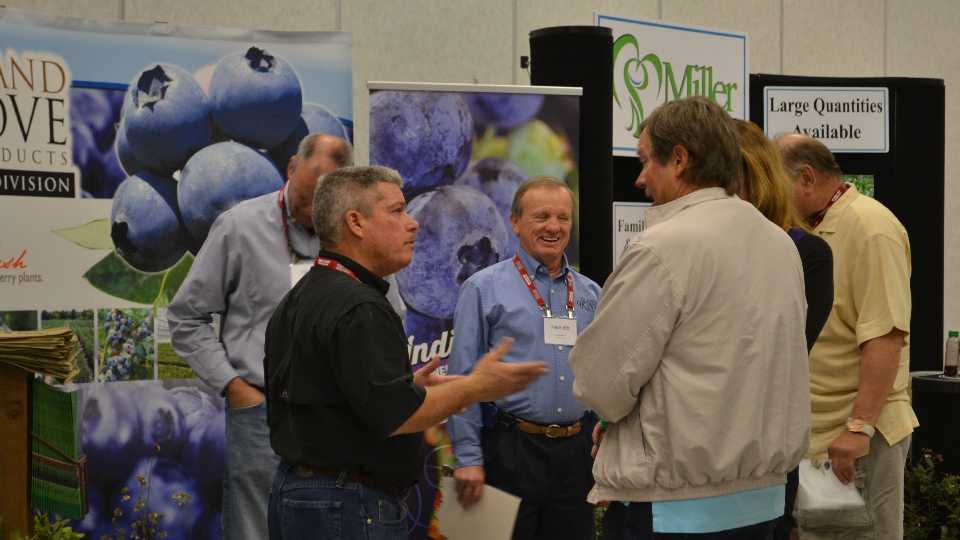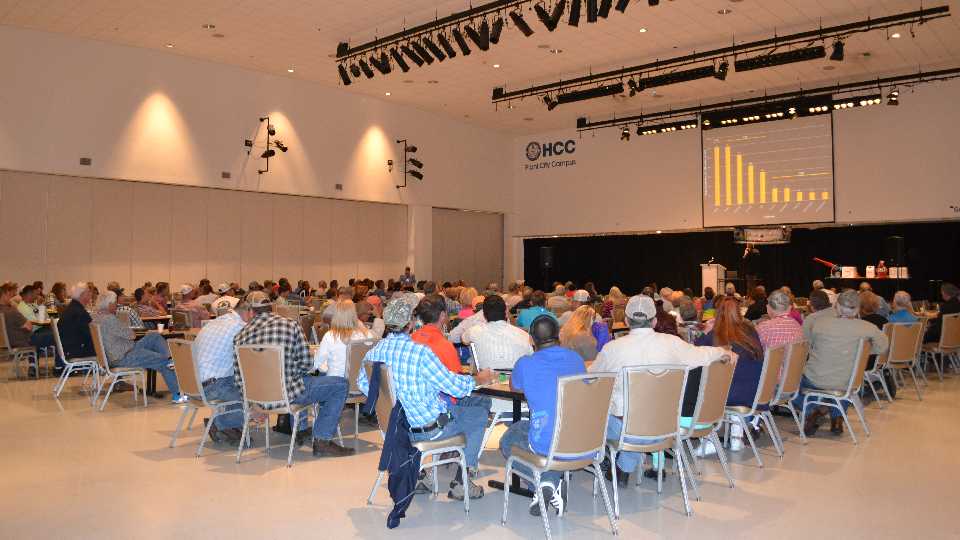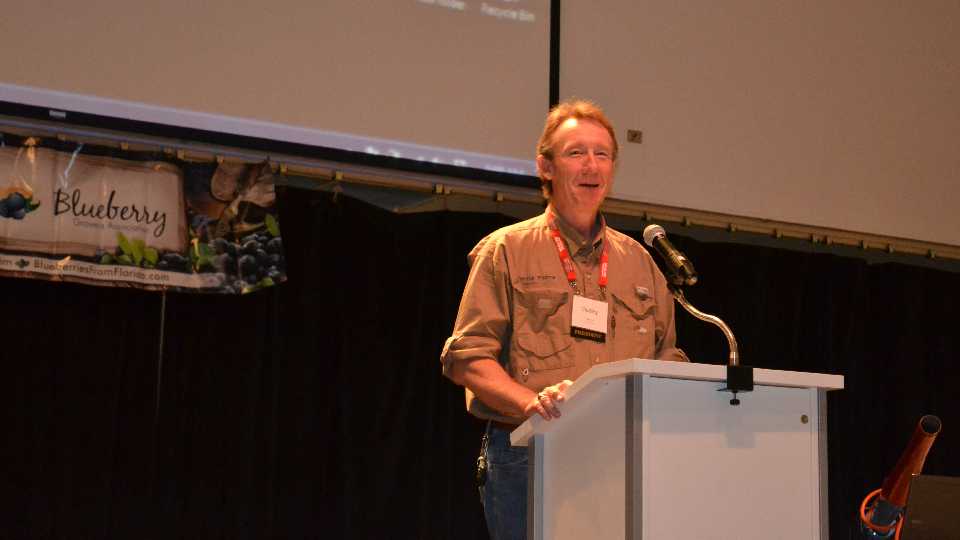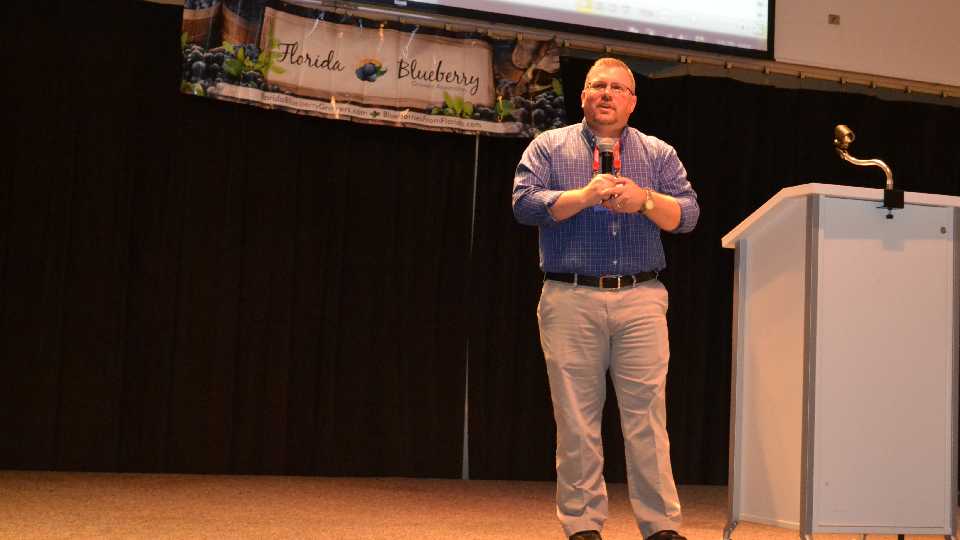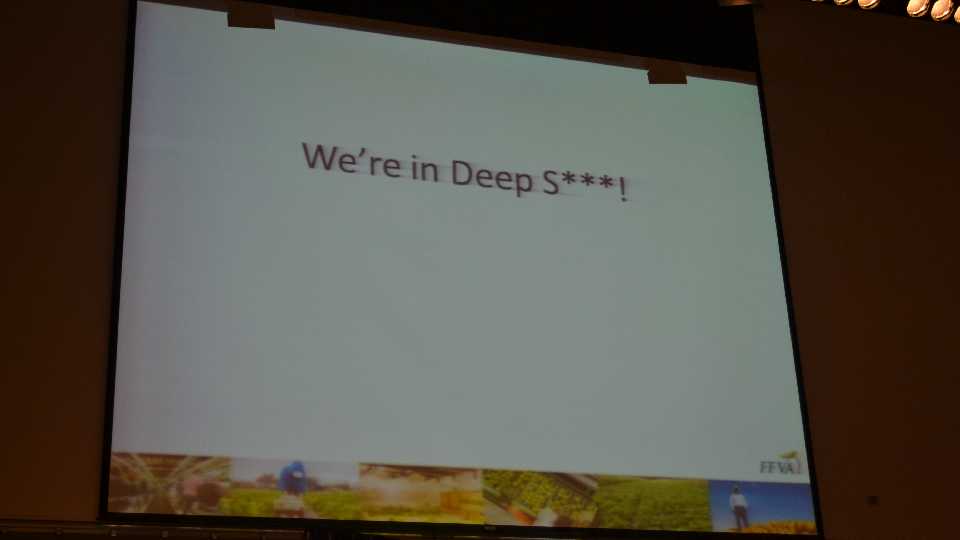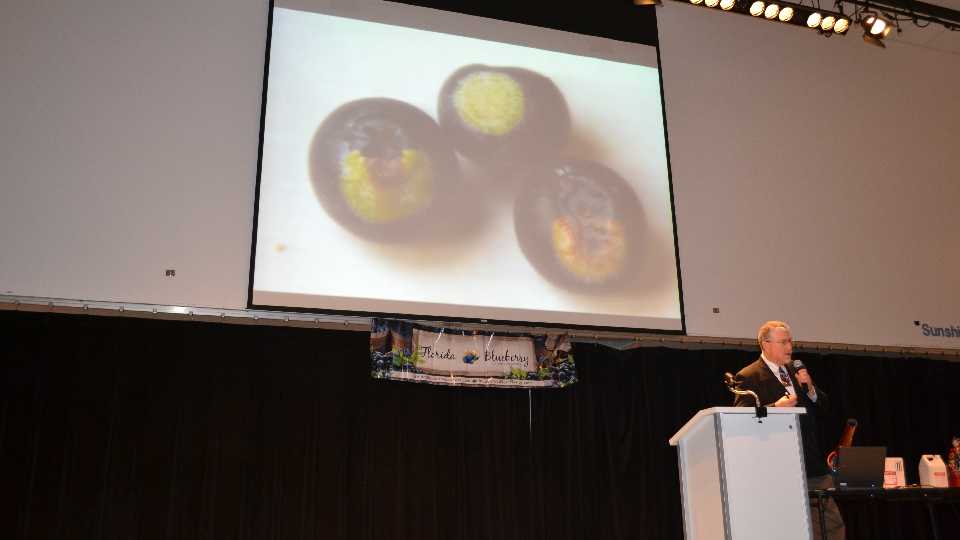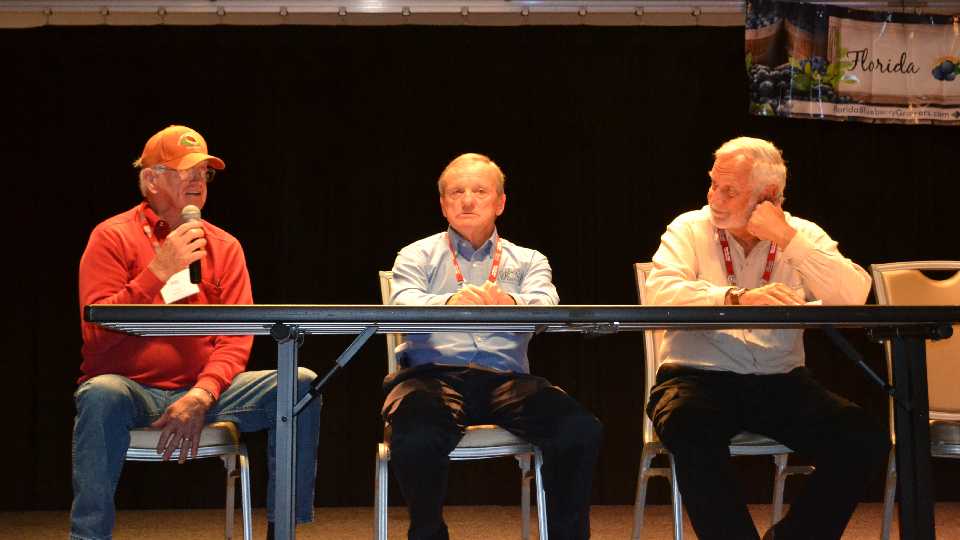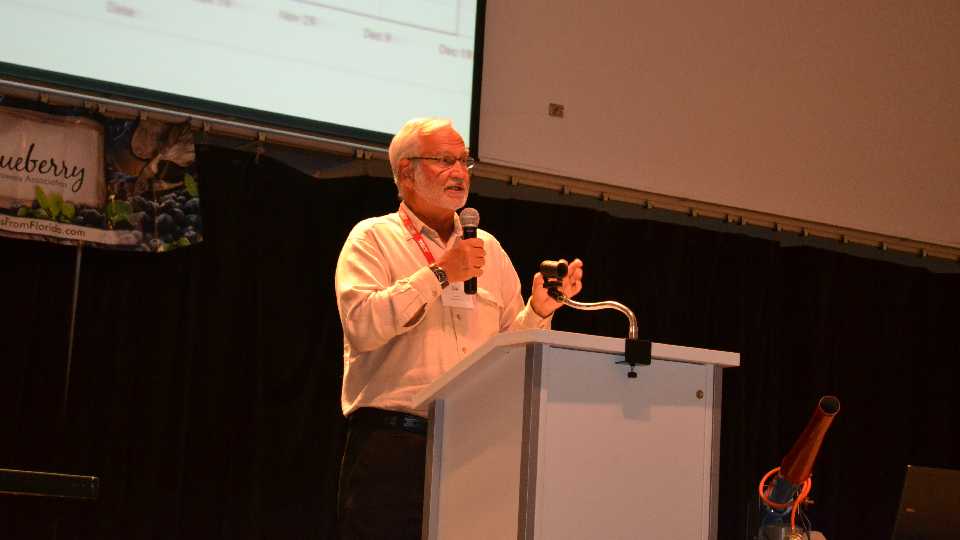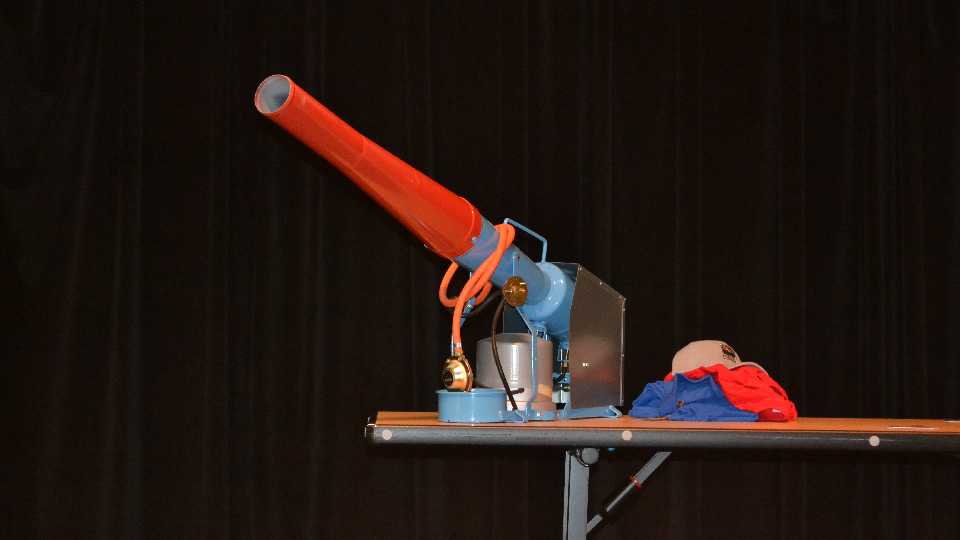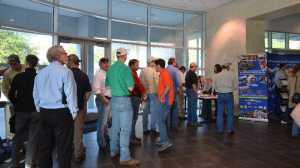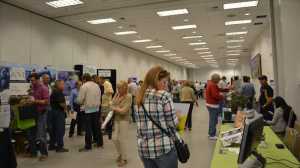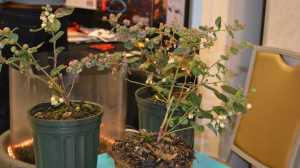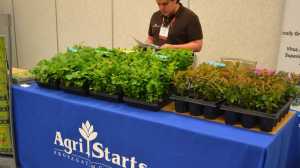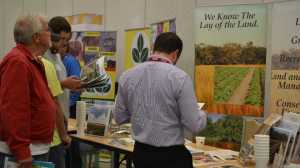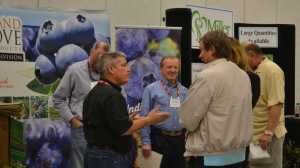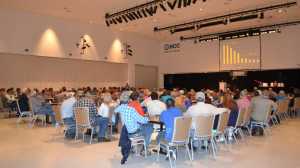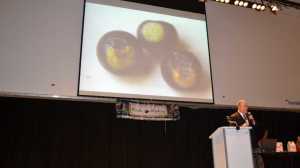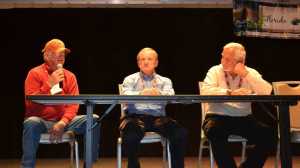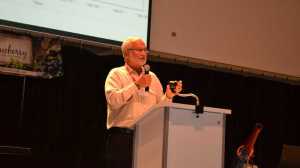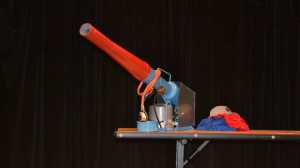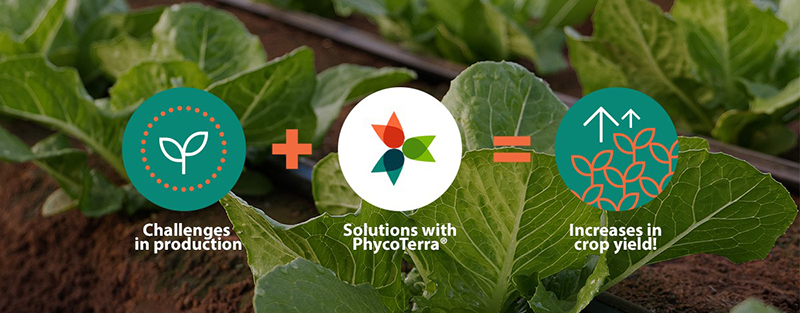Florida Blueberry Crop Sitting Pretty — Weather Permitting
[blackoutgallery id=”70269″]
Florida blueberry growers are pumped for the upcoming season. That much was apparent at this week’s Florida Blueberry Growers Association Spring Meeting. However, there is one variable standing in the way before the market window opens: weather.
By now, the threat of freezing weather is usually past in most of the Sunshine State. However, the forecast is calling for an Arctic blast to invade from the North on the backside of another cold front by the end of this week.
While the prediction of a potential freeze might have dissuaded some from showing up at the industry gathering, the one-day business meeting/short course/tradeshow event at the Hillsborough County Community College Plant City campus still hosted a solid turnout of growers, researchers, and other related professionals.
A highlight of the agenda was the grower panel, which consisted of three industry stalwarts: Alto Straughn, Straughn Farms; Ken Patterson, Island Grove Ag Products; and Bill Peterson of Peterson’s Blueberry Farms. Each gave a brief update on the status of their 2015 crop.
Despite having pest and disease pressure from a flummoxing flathead wood borer as well as stem blotch, Peterson said his Pasco County plots saw better bud set this year. “We held our leaves a bit longer, especially on Jewels.”
Like Peterson, Patterson’s farms experienced good fruit set. The intensive nature regarding inputs – especially the use of hydrogen cyanamide (aka, Dormex) — was not lost on Patterson. “The more asleep they are, the more it takes to wake them up,” he said.
Straughn lamented about the colder-than-usual temperatures his Alachua County operation has endured since the start of the year. Despite that, Straughn feels confident in the upcoming yield, not only for his farm, but for the state in general. “We’re likely to be on the high side of production, if we don’t get hurt by a freeze.”
Introducing 3 New Varieties
With the possibility of several long nights of cold protection running through everyone’s mind, UF/IFAS assistant professor and blueberry breeder Jim Olmstead introduced three new varieties suited to take the heat. According to Olmstead, the new advanced selections are designed specifically for Central and South Central Florida evergreen production (no Dormex necessary).
1. Avanti (FL06-203) is a very low chill (100 chill hours 0 to 7°C), early maturing genotype. Some of its attributes include:
- Can be grown using hydrogen cyanamide with some yield loss
- Firm, high-quality fruit
- Small, dry picking scar
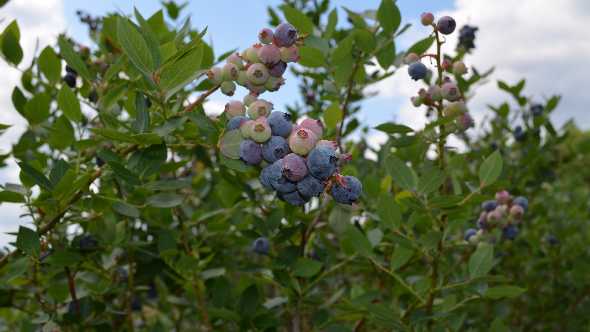
Photo courtesy of UF/IFAS
“It’s low chill, but does best in evergreen production,” Olmstead said.
2. Arcadia (FL07-399) is a low chill (<200 chill hours 0 to 7°C), mid-season selection. Some of its attributes include:
- High yield when grown in evergreen environment
- Large fruit size, sweet flavor
- Excellent survival and leaf-disease tolerance
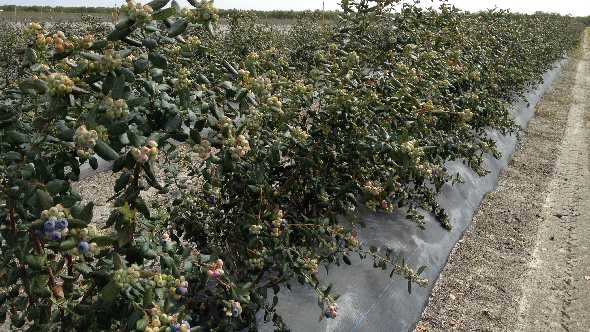
Photo courtesy of UF/IFAS
3. Endura (FL06-377) is a very low chill (150 chill hours 0 to 7°C), mid- to late-maturing selection. Some of its attributes include:
- Produces well under both evergreen and hydrogen cyanamide management systems
- Firm, large fruit
- Excellent, persistent blue color

Photo courtesy of UF/IFAS
“Endura’s sweet spot has been closer to the I-4 corridor,” Olmstead said. “We’re hoping this is something to complement Flicker in this region.”
Revealing Research
An education session standout included one where attendees had a chance to see what the future might hold in blueberry production. Dr. Fumi Takeda, USDA-ARS, led a presentation about the performance of southern highbush blueberries under artificial shade.
Takeda discussed a two-year trial in Florida, which focused on a seasonal, retractable shading system for blueberries. Advantages of using the system include:
- Maintaining a cooler plant temperature – “Possibly a substitute for Dormex,” Takeda said.
- Advance bloom, improved fruit set
- Crop protection: Reduce frost damage and bird deterrent
- Increases U-Pick customer satisfaction
When asked from the crowd about what a system like this costs, Takeda suggested this method might be more appropriate for smaller-sized farms that operate in close proximity to residential areas.
In addition to production research, Takeda also went over the quest for new harvesting/postharvest technology. According to Takeda, one of the objectives is to design a new semi-mechanical harvest-aid system for small- and medium-size blueberry farms. A multi-row harvesting platform would feature improved catcher plate designs to help cushion fruit as it drops and also it would incorporate handheld shakers suspended from the frame to reduce worker fatigue.
As a complement, another objective is to develop a next generation berry impact recording sensor. Referred to by Takeda as BIRD (blueberry impact recording device), the sensor — which is not much larger than a blueberry itself — would travel among berries along the packing line and collect data to improve harvest and postharvest operations through a critical understanding of mechanical impacts.
Though extremely technical in nature, Takeda said the end-game is simple. “The goal is to machine harvest blueberries without bruising them.”





